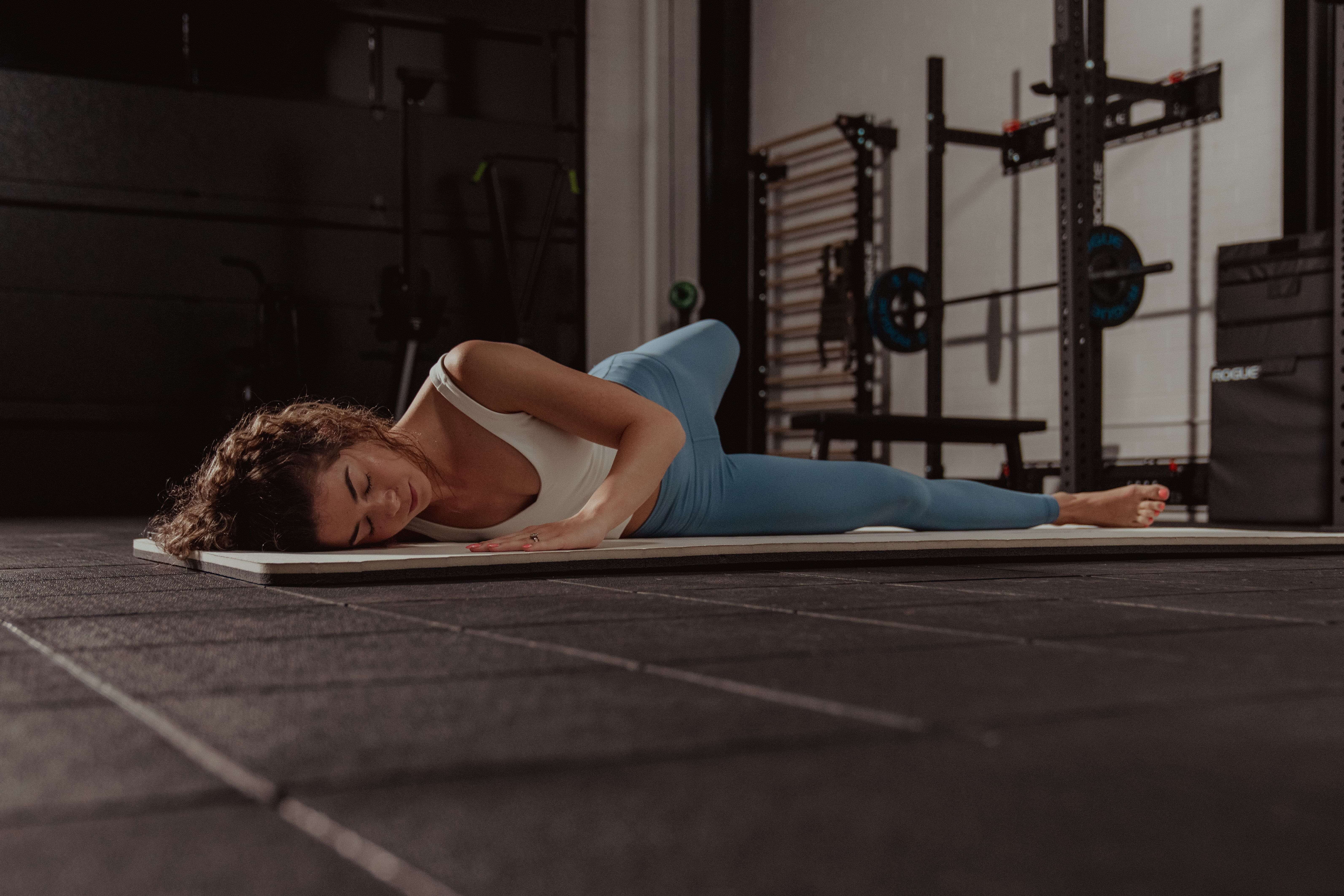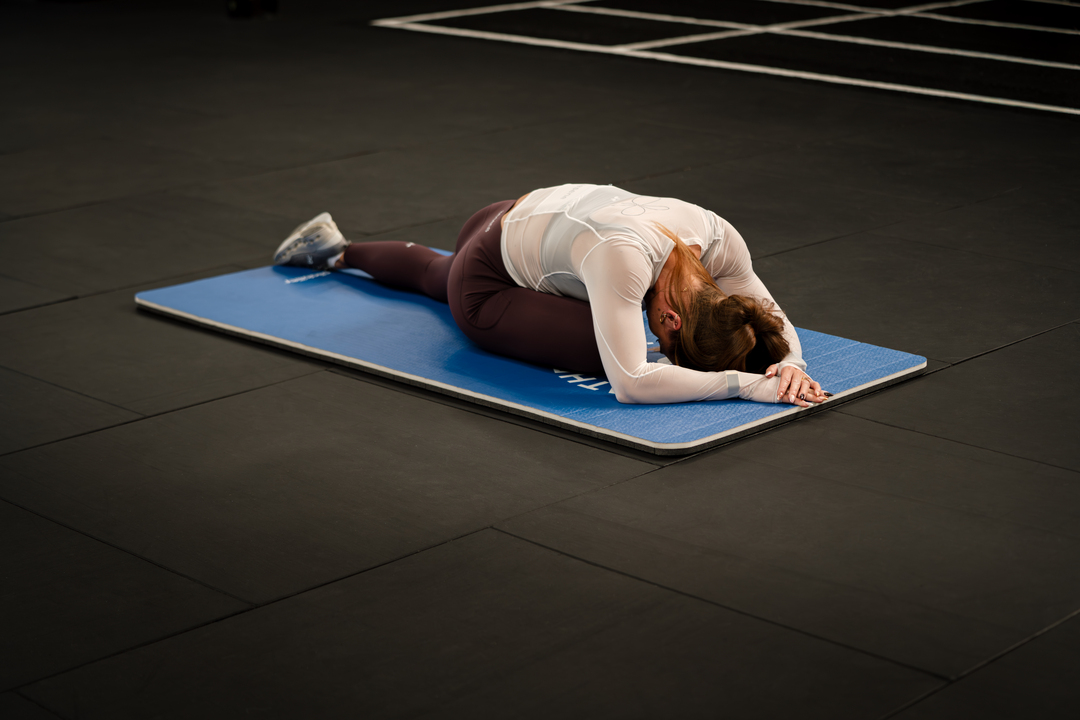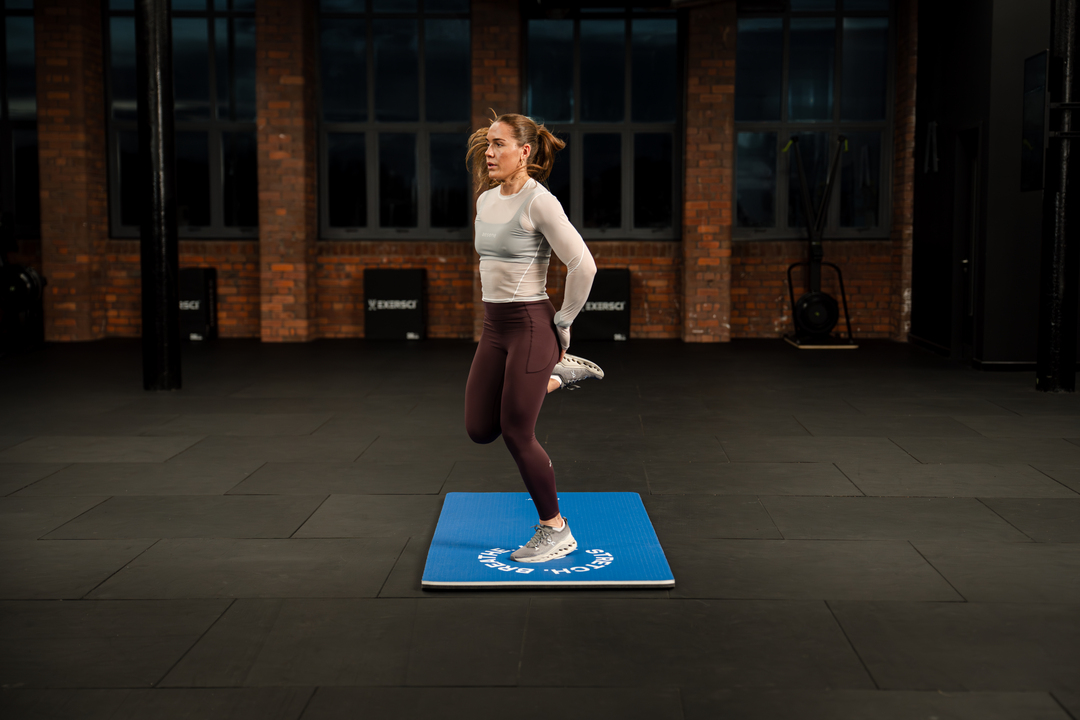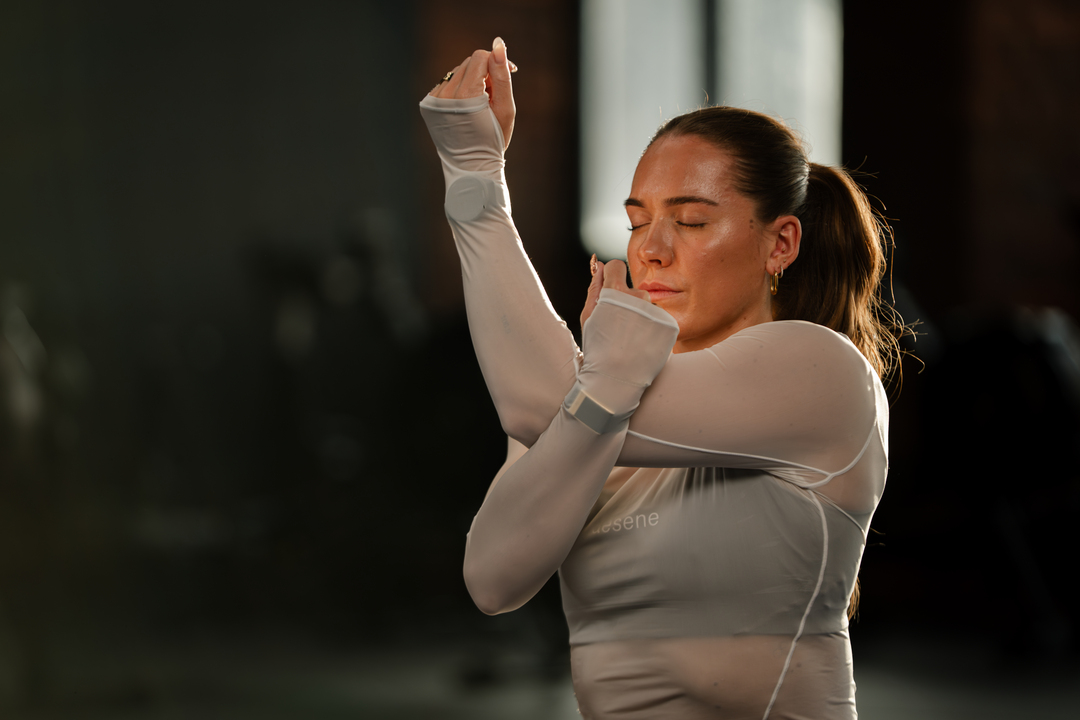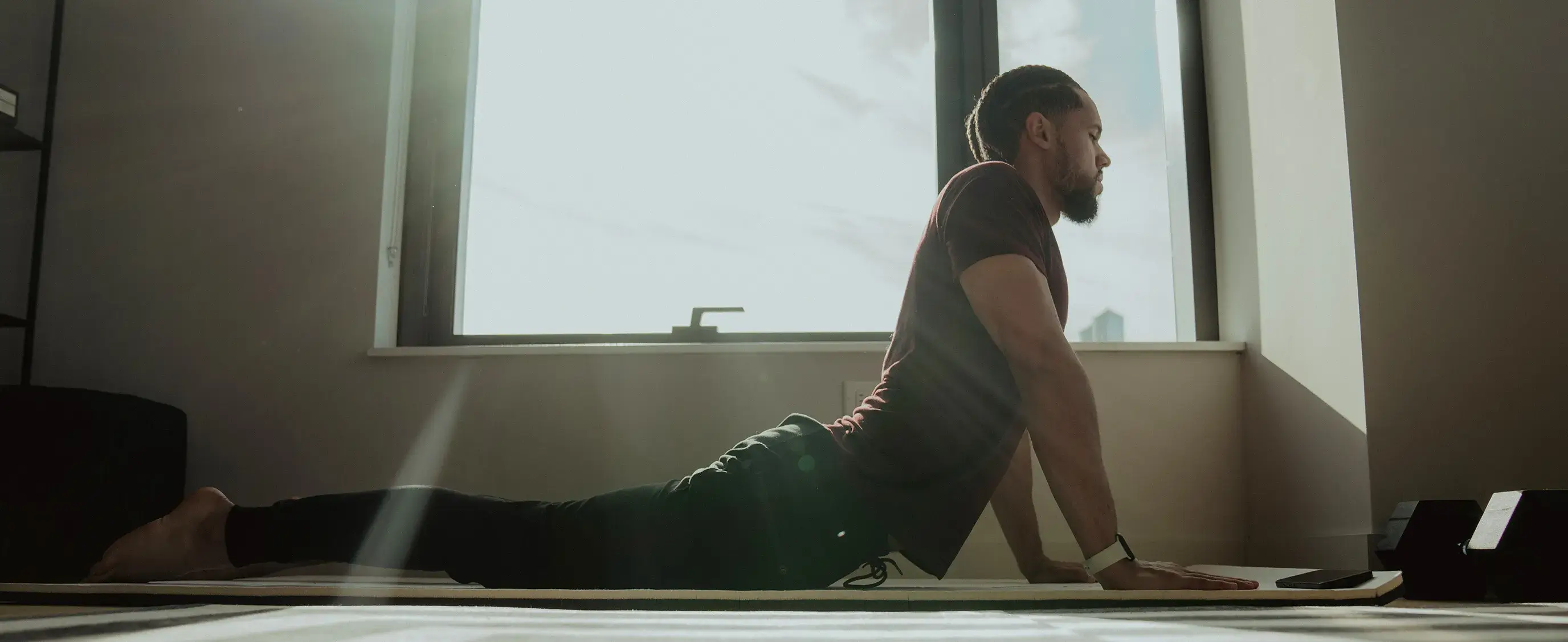Imagine waking up in the morning and not being able to turn over or reposition your body due to pain or limited mobility. For someone recovering from surgery, an injury, or living with a medical condition or disability, it can feel like waking up beneath a heavy blanket with no way to get out from under it. Bed mobility exercises help people regain independence in bed movements, allowing them to reposition comfortably without assistance, reducing the risk of bedsores, and improving their overall quality of life. This article will provide valuable insights on bed mobility exercises to help you achieve your goals and return to life.
Pliability's mobility app offers a wealth of resources on bed mobility exercises to help you regain independence in bed. With easy-to-follow routines and video demonstrations, you can learn at your own pace and return to moving comfortably in no time.
What is Bed Mobility & Why it is Important

Bed mobility refers to a person's ability to move, reposition, or shift while lying in bed. This includes:
- Rolling
- Scooting
- Sitting up
- Transitioning between different positions
Bed mobility is essential for several reasons. It is vital for maintaining independence. The less a person has to rely on others to help them move in bed, the more control they can retain over their life.
Bed mobility helps prevent pressure sores and reduces the risk of complications like muscle stiffness or contractures. It enhances the overall quality of life, particularly for patients with limited mobility, such as the elderly or those recovering from surgery.
What is Functional Mobility?
Functional mobility explains the ability of a person to move around in his or her environment, including the home environment. This includes walking, standing up from a chair, sitting down from standing, scooting, and moving around in bed.
The three main areas of functional mobility are described below:
- Bed Mobility: The ability to move around in bed, including actions like scooting, rolling, or moving from lying to sitting and sitting to lying.
- Transfers: The action of moving from one surface to another. This includes moving from a bed into a chair or moving from one chair to another.
- Ambulation: The ability to walk. This includes assistance from another person or an assistive device, such as a cane or a walker.
The Importance of Bed Mobility in Patient Care
Bed mobility, although it can occur on mats, plinths, or other similar surfaces, includes:
- Rolling
- Scooting
- Sitting supine
- Moving between supine and sitting
- Sitting and scooting on the edge of the bed
Bed mobility is valuable in and of itself in that it increases mobility and functional independence. It is also valuable because, when done correctly, it provides a sound basis for out-of-bed mobility. It is integral in patient care, especially for people with limited mobility.
- It minimizes the risk of pressure ulcers and bed sores that can develop due to prolonged immobilization.
- It assists in proper blood circulation and helps prevent other health complications, like deep vein thrombosis.
- It enhances patient comfort and autonomy, improving their overall hospital experience.
Bed Mobility Progression
Although each patient's condition determines the nature of his or her progression in rehabilitation, functional mobility tends to follow a predictable progression based on the interplay of motor control and biomechanical principles. In general:
- Stability precedes mobility.
- Maintaining a position precedes attaining a position.
- Static and dynamic stability with a large base of support BoS precedes static and dynamic stability with a smaller BoS.
- Attaining a position with a low center of mass (CoM) precedes attaining a higher CoM.
These general rules work together for functional purposes to create a progressive order of functional positions, many of which can be developed in bed mobility. A patient can progress not only from one position to the next but also within each position as well. For example, a patient is likely to be able to maintain a seated position at the edge of the bed before moving from supine to a seated position. A patient may be able to maintain stability in a sitting position before managing the challenges of dynamic stability inherent in seated self-care activities.
Essential Muscles Involved in Bed Mobility
Before we explore exercises to help with bed mobility, we need to examine the muscle groups involved. Bed mobility requires the coordinated effort of several essential muscle groups to enable smooth and controlled movements.
- The core muscles: Are critical for stabilizing the trunk and facilitating rolling and sitting up, this includes the rectus abdominis, obliques and transverse abdominis
- The gluteal muscles: such as the gluteus maximus, play a key role in bridging exercises, providing the power needed to lift the hips off the bed.
- The hamstrings and quadriceps in the legs: contribute to bending and extending the knees during repositioning.
- The erector spinae muscles in the back: support spinal movements, aiding in trunk rotation and lifting.
- The shoulder girdle muscles, including the deltoids and latissimus dorsi: assist in pushing and pulling during transfers.
Together, these muscle groups work synergistically to enhance bed mobility, enabling patients to reposition themselves, transition from lying to sitting, and perform other essential movements.
Why Is Bed Mobility Important?
People with limited mobility from:
- Illness
- Weakness
- Injury
- Disability
Patients with limited mobility may have difficulty moving in and out of bed. Assisting patients with limited mobility increases the caregiver's risk of injury. For the safety of the caregiver and the individual needing mobility assistance, good body mechanics must always be maintained.
Related Reading
- Ankle Mobility Exercises
- Shoulder Mobility Exercises
- Hip Mobility Exercises
- How To Improve Flexibility
- Thoracic Mobility Exercises
- Stretch Before Or After Workout
- Wrist Mobility Exercises
- Mobility Exercises For Beginners
- Best Stretching Routine
- Back Mobility Exercises
- Lower Body Mobility Exercises
- Leg Mobility Exercises
- Mobility Exercises For Athletes
What are the Primary Goals of Bed Mobility Training?
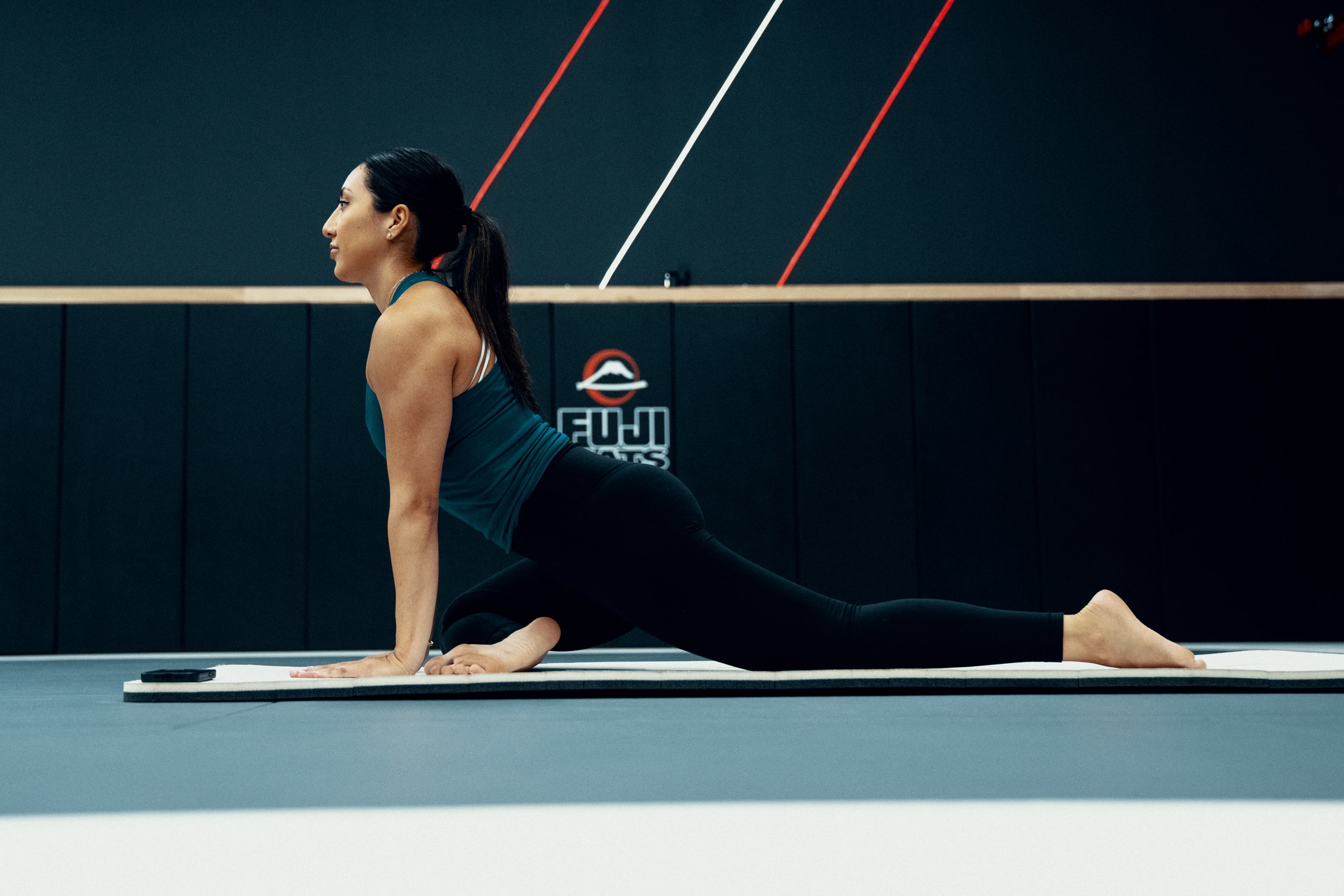
Bed mobility exercises aim to improve a patient's ability to reposition in bed, which enhances safety, decreases caregiver burden, and improves sleep quality. Regular bed mobility exercises help preserve muscle strength and promote independence. Bed mobility can serve as a foundation for regaining the ability to transfer from the bed to a wheelchair or to walk.
Reducing the Risks of Being Bedridden
Lack of movement can lead to a range of issues for bedridden patients, such as muscle atrophy, joint stiffness, pressure ulcers, and respiratory complications. One crucial aspect of care for bedridden patients is bed mobility training. This targeted physical therapy focuses on techniques and exercises to help improve patients' ability to move and reposition themselves in bed.
Bed mobility training helps bedridden patients in terms of the following:
- To reduce the risk of complications like pressure ulcers, joint contractures, and muscle atrophy by promoting regular movement
- To help preserve muscle strength, prevent the loss of function, and improve overall endurance
- To promote independence
- To improve blood circulation and reduce the risk of blood clots
- To enhance comfort and improve overall quality of life despite being bedridden
Improving Mental Well-Being
Regular bed mobility exercises empower patients to perform basic activities independently. Simple tasks such as turning in bed, sitting up, or changing positions become more manageable, fostering a greater sense of autonomy for bedridden patients and improved mental well-being.
Pliability: Enhancing Your Fitness and Mobility
If you're feeling limited by pain or your ability to move, Pliability aims to:
- Complement your existing fitness routine
- Help you move better
Sign up today for seven days free on iPhone, iPad, Android, or our website to use our mobility app to improve flexibility, aid recovery, reduce pain, and enhance range of motion.
17 Simple Bed Mobility Exercises for Improved Independence

1. Seated Salsa
Encourage patients to perform seated salsa moves while sitting on the edge of the bed. Use upbeat music to create a lively atmosphere. This exercise improves upper body mobility and rhythm, core stability, and hip strength which aids in better coordination and balance.
2. Reaching Activity
Have your patients reach for different objects in different directions and heights. You can make this into a game by having them reach for a ring or ball and throw it into a target. This could make the exercise more interesting and less monotonous.
3. Balloon Tap
Using a lightweight balloon, encourage patients to keep it in the air using their hands or feet while sitting or lying on the bed. This fun activity enhances hand-eye coordination as well as core control.
4. Immersive Scenarios
If available, use VR headsets to immerse patients in different environments where they need to move or reach for objects. This modern approach can significantly enhance functional mobility, engagement, and motivation.
5. Pillow Fort Building
Encourage patients to build a small fort using pillows and cushions. This task involves lifting, core mobility, and strategic thinking, making it both physically beneficial and mentally stimulating.
6. Body Twists
This bed mobility exercise for spinal cord injury patients teaches you how to roll to your side. Make sure you have enough room next to you to safely roll over. Then, use your arms to move your right leg over your left leg.
While lying on your back, lift your head and thrust your arms to the left. You may need to rock back and forth a few times in order to gain momentum before the roll. Use the momentum of the swing to roll the rest of your body to the left side. Repeat on the other side. This time, your left leg should go over your right leg as you roll to the right.
7. Reverse Push-Ups
This bed mobility exercise helps strengthen your arms and practice transitioning into an upright position. Lay on your back with elbows bent outward. Then, push down with the hands and straighten the elbows to prop the upper body up.
Practice lowering the body by bending the arms and lifting the body by straightening the arms. To get into a fully upright position, straighten the elbows and alternate shuffling the arms towards your hips. To lie down again, shuffle your arms backward while your torso lowers towards the mattress.
8. Mild Hamstring Stretch
Depending on the level and severity of your spinal cord injury, you may experience paralysis in the trunk and legs (paraplegia), which can make it challenging to sit upright. This bed mobility exercise can help you develop sitting balance.
Sit with your legs straightened in front of you and lean slightly forward, towards your toes. Leaning forward helps prevent you from falling back while having your legs straightened adds enough resistance in the hamstrings to prevent falling forward.
9. Lateral Trunk Lift
For some, getting up can be easier by leaning to one side. This bed mobility exercise for spinal cord injury patients helps you practice lifting the trunk from the side.
Roll over to your right side, prop your upper body up with your right forearm, and use your left arm to help keep you balanced. Press down with your right hand as you straighten the right elbow to lift the torso. Your body should almost look like a sideways “J.”
10. Bridging Exercises
Bridging exercises are fundamental for strengthening the lower back, glutes, and hamstrings, which are essential for lifting the hips off the bed and repositioning. How to Perform:
- Starting Position: Patient lies on their back with knees bent, feet shoulder width apart and feet flat on the bed.
- Movement: Instruct the patient to lift their hips towards the ceiling, creating a straight line from the shoulders to the knees.
- Hold: Hold the position for a few seconds before slowly lowering the hips back down.
Benefits:
- It activates abdominal muscles.
- Enhances core and lower body strength.
- Facilitates easier transitions in and out of bed.
11. Rolling from Side to Side
Rolling from side to side is essential for repositioning and preventing pressure sores. It also prepares patients for sitting up and getting out of bed. How to Perform:
- Starting Position: Patient lies flat on their back.
- Movement: Bend one knee and place the opposite arm across the chest.
- Roll: Encourage the patient to roll towards the side of the bent knee using their core muscles and arms for support.
Benefits:
- Improves core strength and coordination.
- Enhances the ability to reposition independently.
12. Segmental Rolling
Segmental rolling involves rolling one body segment at a time, promoting spinal flexibility and coordination. How to Perform:
- Starting Position: Patient lies on their back with arms extended overhead.
- Movement: Instruct the patient to start rolling by moving the head and upper body first, followed by the hips and legs.
- Focus: Emphasize control and smooth movement.
Benefits:
- Increases spinal mobility.
- Improves coordination and muscle control.
13. Supine to Sit Transfers
Transitioning from a lying to a sitting position is vital for bed mobility and prepares patients for further mobility tasks. How to Perform:
- Starting Position: Patient lies on their back.
- Movement: Bend the knees and roll to one side, then use the arms to push up into a sitting position or reach towards a bed rail to assist with sitting up.
- Support: Provide assistance as needed to ensure safety.
Benefits:
- Enhances upper body strength and coordination.
- Prepares for independent sitting and transition to standing.
14. Knee Flexion to and/from Extension or Leg Slides
Leg slides help improve hip and knee flexibility and strength, which are crucial for bed mobility. How to Perform:
- Starting Position: Patient lies on their back with legs extended.
- Movement: Slide one heel towards the buttocks, bending the knee while keeping the foot in contact with the bed.
- Return: Slowly slide the leg back to the starting position.
- Optional: Use a slider disk to enhance the movement.
Benefits:
- Improves hip and knee range of motion.
- Enhances strength and control in the lower extremities.
15. Gluteal Sets
It is a really simple exercise that you can perform to strengthen your buttock muscles after a period of bed rest. These exercises are also performed after surgery to keep the blood moving and prevent blood clotting.
In this exercise, you will squeeze and relax your butt muscles which act like a sponge, and then push blood To perform this exercise simply lie on your back in bed and squeeze your buttocks and hold the squeeze for 5 seconds after that relax slowly and repeat the exercise 10 times.
16. Hip Adduction Squeeze
Strong Hip muscles are key to improving the way you can move in your bed. The hip adduction exercise is a great isometric exercise that can help you improve the function of groin muscles, improving your bed mobility.
When performing a hip abduction, take a ball or roll bath towel and lie down on your back with your knees bent and the ball between them. Now tighten your stomach muscles and then gently squeeze the ball. Hold this squeeze for 5 seconds and then relax. Repeat this for 10 times.
17. Low Trunk Rotation
The ability to roll in bed is very important to help you safely get up out of your bed in the morning to improve your rolling ability. Perform lower trunk rotation exercises, and here is how to perform these:
- Lie on your back with your knees bent.
- Gently roll your knees to one side.
- Make sure that your shoulders are flat when your knees are rolling.
- Now bring your knees back to the starting position and role to the opposite side.
- Repeat this 10 times on both sides.
Related Reading
- Golf Mobility Exercises
- Upper Body Mobility Exercises
- Mobility Exercises For Runners
- Can You Over Stretch
- Squat Mobility Exercises
- Functional Mobility Exercises
- Why Stretching Is Important
- Foot Mobility Exercises
- Arm Mobility Exercises
- Hamstring Mobility Exercises
- Elbow Mobility Exercises
- Rotator Cuff Mobility Exercises
- What Are Mobility Exercises
- Full Body Mobility Exercises
7 Adaptive Tools to Improve Bed Mobility

1. Leg Lifter: An Adaptive Tool for Leg Movement
Especially if you have paralysis in the lower body, you might struggle to lift and move the legs. In such cases, individuals with paraplegia can use a leg lifter, which is a rope with a loop at each end. Place a foot inside one loop and your arm in the other loop. Use your arms to maneuver the leg in and out of bed.
2. Bed Rail: A Smart Handle for Safe Transfers
A bed rail is a handle that slides under the mattress to provide a safe and stable surface to hold onto as you transfer on and off your bed.
3. Bed Rope Ladder: A Simple Tool for Positioning
A bed rope ladder is an assistive device that attaches to your bed frame. By working your way up the rungs, you can get into an upright sitting position. Similarly, by working your way down, you can lower yourself into a flat position.
4. Transfer Poles: A Simple Tool for Positioning
Transfer poles, often positioned next to the bed, extend from floor to ceiling and offer a sturdy grip. They are especially useful for those who can leverage their upper body strength to assist in moving from a seated or lying position to standing. This tool is invaluable for those seeking a balance between independence and support in their mobility journey.
5. Bed Trapezes: Getting a Grip on Bed Mobility
Bed trapezes hang over the bed and are designed for individuals capable of using their upper body strength to adjust their position. Users can pull themselves up by grabbing the trapeze, making it easier to sit up, adjust their position, or even transition out of bed with less assistance.
6. Electric Beds: The Future of Bed Mobility
Electric beds represent a more advanced solution, offering electronic adjustments to the bed's position. These beds reduce the physical effort required to exit the bed by elevating the head, feet, or the entire bed. They are particularly suited for those with minimal mobility, providing a significant boost to independence and comfort.
7. Patient Lifts: A High-Tech Approach to Transferring
For individuals requiring substantial assistance, patient lifts are a game-changer. These devices can be either mechanical or hydraulic and are designed to safely lift and transfer a person from the bed to another area, such as a wheelchair or another room. Requiring minimal effort from the caregiver, patient lifts ensure a safe and smooth transition for those with severe mobility limitations.
Related Reading
- Gowod Vs Pliability
- Tennis Mobility Exercises
- Weighted Mobility Exercises
- Cervical Mobility Exercises
- Resistance Band Mobility Exercises
- Rib Mobility Exercises
- Glute Mobility Exercises
- Best Yoga App
- Free Apps For Stretching And Flexibility
- Mobility Apps
- Stretching Apps
- Chest Mobility Exercises
- Glute Stretches
- Gluteus Medius Stretch
- Glute Stretch
- Cervical Radiculopathy Exercises
Improve Your Flexibility with Our Mobility App Today | Get 7 Days for Free on Any Platform
Overstretching occurs when you push your muscles and joints beyond their limits, leading to damage instead of improvement. Though overstretch sounds simple, it can lead to painful injuries that may prevent your mobility training progress. Understanding the risks of overstretching will help you avoid it and improve your flexibility.
